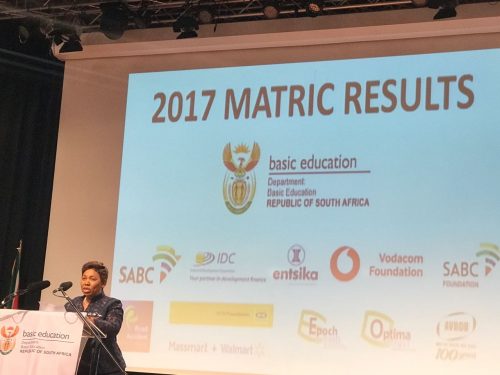Thabo Mohlala
ANALYSIS
The 2017 matric results have elicited animated debates and a wide range of views from various political parties, teacher unions and some education experts. This is inevitable because education is highly contested terrain.
This is even more contentious given the country’s sad historical past where the apartheid state used education to racially polarise and deepen social inequality. The introduction of a new education system after 1994, anchored on democratic human rights values and ethos, has not been an easy enterprise.
The curriculum has been tweaked several times and teachers have been taken through the paces to ensure the system delivers quality academic outcomes. But the delivery of quality and credible education seems to be an elusive dream.
Last week the minister of basic education, (DBE), Angie Motshekga, announced a 75.1% overall pass rate for the 2017 grade 12 class including progressed learners. Naturally, a system that consistently attains or sustains 70% pass rate threshold is a cause for celebration. Motshekga is upbeat the system is delivering the desired outcomes and that her department is on course to realise its 2030 NDP goals.
But education experts hold a different view and argue that it is wrong to use the grade 12 pass rate to measure the health of the current education system. They say the only credible tool to ascertain if the system is stabilising is the calibre of the learners it produces. Those learners who have completed their 12-year academic journey should be numerate and literate so they can cope well at tertiary institutions.
It is common cause that most grade 12s are found wanting in their first years at colleges or universities leading to them dropping out prematurely.
The recent Progress in International Reading and Literacy Study (Pirls) and Trends in International Mathematics and Science Study (Timms) tests also buttress this point. Successive results have shown that South African learners lagged behind their counterparts from countries with smaller economies.
The other serious concern experts highlighted is the apparent inability of the system to retain and account for learners who started school at the lower grades. They argue that the system has been bleeding learners and the DBE does not seem to have mechanisms in place to account for them.
This is clearly demonstrated by the number of learners who register for the examinations and those who actually sit for finals. Although the department has implemented some laudable interventions such as the progress learner policy, the problems seem to persist.
Nic Spaull, a renowned education expert based at Stellenbosch University, reacted to the matric results by tweeting a question: “If there were about 1,000,000 kids in Gr1 in 2006 and 530,000 full-time matrics in 2017…where did the other 400,000 odd kids go? Not to FET & into jobs unlikely”.
South African Democratic Teachers’ Union (Sadtu) also shared its statistics saying a total of 1,182,011 learners entered grade 1 in 2006, but only just about 543,000 of those had written matric examinations.
Professor Jonathan Jansen, also raised deeper questions about the system’s reliance on the exit class. He asked whether the education system should be judged by the minority who reached and passed Grade 12, or by the majority that dropped out, failed, or simply disappeared from the record since they enrolled in Grade 1.
“Given the race and class identities of those who pass well enough, does the school system reduce or reinforce inequality in South Africa?” asked Jansen.
He further asked what the performance of the school system would look like if the more respectable passing standard of 50% was set for all school subjects.
Professor Sarah Gravett, dean of education at the University of Johannesburg, said the country is too pre-occupied with the matric results at the expense of the lower grades. She said although the schooling system shows some signs of progress, more could be achieved if early childhood development phase gets support.
“My sense is many teachers at the Foundation Phase don’t have the right qualifications to teach the little ones. Foundation Phase is a way to go, however, it is not a quick-fix solution but certainly a sustainable way of improving the system,” said Gravett.
She hastened to add, however, that she does not intend to impugn the significance of the grade 12 results within the education system.
But “It makes no sense to look at the overall performance of individual provinces. Instead, the most reliable and quality tools to use is to look at how many bachelor passes the provinces achieved,” said Gravett.
She also stressed the importance of fortifying district offices, saying the provinces that do well have functioning and effective district offices. While district offices are key delivery vehicles because of their proximity to schools, said Gravett, most of them particularly those serving deep rural areas, are hamstrung by lack of both human and materials resources to carry out their functions effectively.
Gravett said in the past, provinces such as Limpopo, KwaZulu-Natal and the Eastern Cape produced poor results mainly because they serve vast and under-developed rural communities with huge socio-economic challenges.







